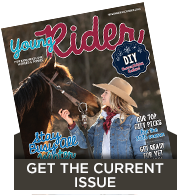Buying a helmet can be tricky. There are so many decisions to make: brand, price, style, fit, color—the options can seem endless. But the most important thing about a riding helmet that rises above everything else is proper fit.
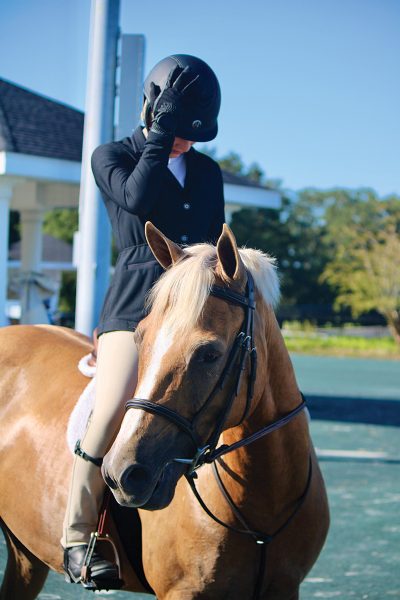
Measuring Up
Start by talking to someone with experience fitting riding helmets. This could be your trainer, someone who works at a tack shop, or an adult who rides at your barn. Getting this expertise is key to making sure your head is protected if you fall.
The very first step to finding the right riding helmet is measuring your head circumference. Some helmets are sized in small/medium/large (often with a dial to further snug the fit), but others are sized in numbers (6 ⅞, 7, 7 ⅛, et cetera) that correspond to your head measurement.
To measure your head, get a vinyl or fabric measuring tape or a string and a ruler—and a helper. Put your hair in a tight, low ponytail at the nape of your neck.
Wrap the tape or string around your head at its widest point: about 1 inch above your eyebrows, just above the top of your ears and over the bump at the back of your head.
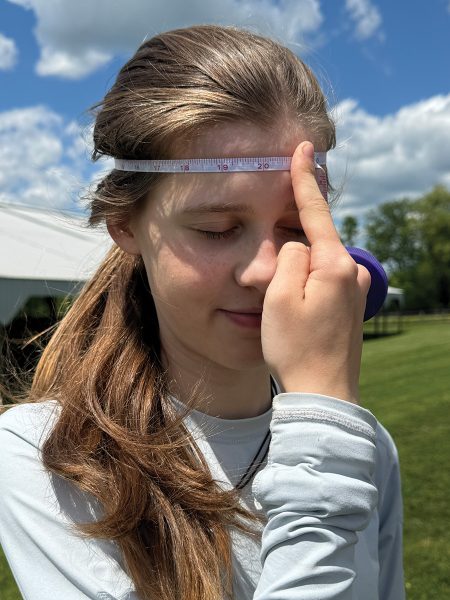
If you’ve used a string, grab hold of where the string crosses, then lay it out flat on the ruler.
Once you have that measurement, compare it to helmet sizing charts. Each brand’s fit and sizing, like clothes, can vary. If your measurement is between sizes, it’s often best to opt for the larger size. Some styles have a dial that lets you snug the size perfectly to your head.
The Perfect Riding Helmet Fit
This is where visiting a physical tack shop can be much more useful than shopping online. Some people have heads that are more oval than round or vice versa, and some brands fit one better than the other.
You can often tell the shape of your head when trying on helmets: A helmet that is too tight on the front of your head—or if you can wiggle the helmet from side to side—is too round, and means you should look for a more oval-shaped one. If the helmet can be rocked from front to back (even if it fits well on the sides) it’s too oval, and means you need one that’s more round.
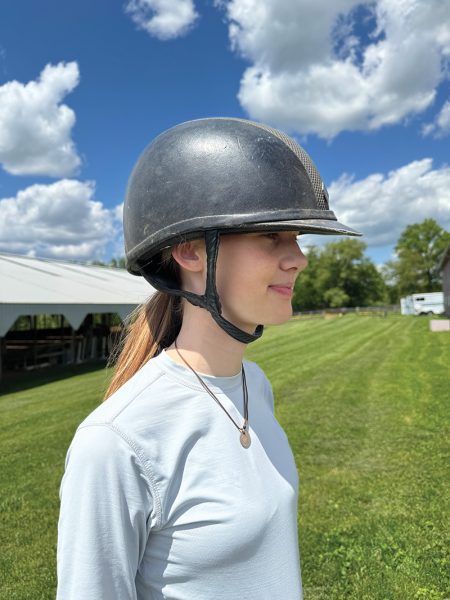
A helmet should fit snugly and not shift around when you have it on. The last thing you want is for it to fall over your eyes when you land from a jump!
One of the easiest ways to tell if to tell if a helmet fits well is to put it on so it sits about one finger-width above your eyebrows. Grab the brim of the helmet and move it up and down—if your eyebrows move with the helmet, the fit is snug enough.
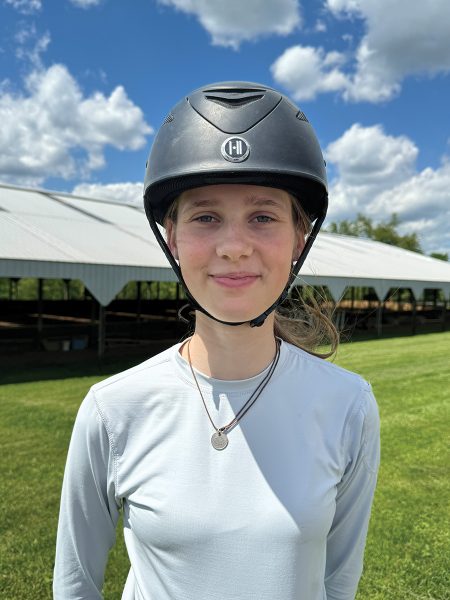
Harness Fit
One of the most important ways to stay safe is to ensure the harness is adjusted properly. It shouldn’t be hanging below and not touching your chin, but it shouldn’t dig into your skin, either. You should be able to get one finger under the chin strap.
The V-shape that goes around your ear should sit just under your earlobe.
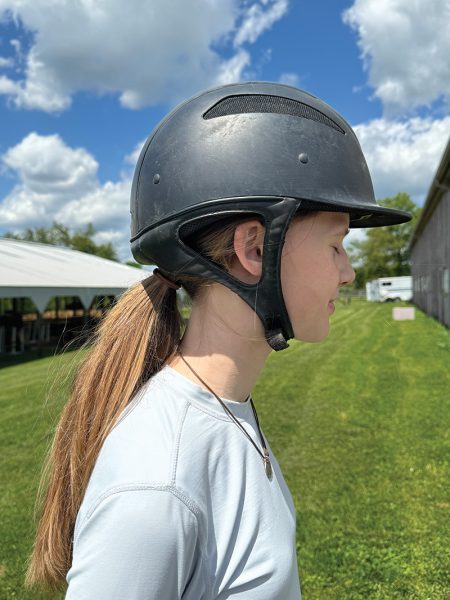
Hair Up or Down?
While most young riders leave their hair outside their helmet in a low ponytail, braid, or low bun, some prefer to have it tucked up under their helmet—and in some cases, wearing your hair like this is required for showing.
It’s important to try on your helmet with how you intend to wear your hair; it will affect the helmet’s fit. If you school with your hair down and show with it up, a helmet that has a dial to adjust the fit may be best.
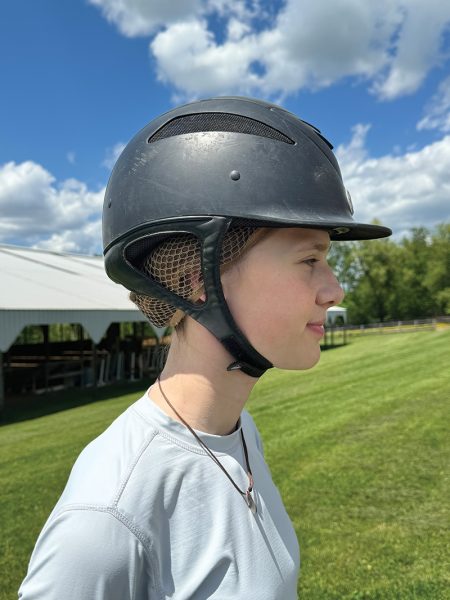
You may also consider buying a separate helmet for hair up and hair down—the other advantage of this is that your show helmet will stay nice and clean, plus you’ll have a spare in case one is worn during a fall.
What is MIPS Technology?
One of the newest technologies on the helmet market is MIPS, which stands for Multi-Directional Impact Protection System. MIPS is an additional layer under the padding in a helmet that moves slightly when your helmet strikes something in a rotational fall, redirecting the rotation motion away from the head and reducing the risk of brain injury.
Curious if the helmet you already have is equipped with MIPS? It should have a small yellow sticker that says “MIPS” if it has this technology. It will also say it on the packaging the helmet came in.
Many helmet manufacturers offer helmets with MIPS technology, including Charles Owen, One K, Ovation, Samshield, Tipperary, Trauma Void and Troxel.
When to Replace a Riding Helmet
Any time your helmet hits the dirt, you’ll need to buy a new one. Cracks and damage may not be visible to the naked eye, but they can still affect protection. Some helmet manufacturers offer a discount on new helmets bought after a fall, so keep your receipt.
Even if it hasn’t been involved in a fall, plan on replacing your helmet at least every 5 years, as the materials it’s made with will begin to break down. Additionally, if you can see any dents or cracks on the helmet’s shell, it’s time to buy a new one.
This article about riding helmet fit appeared in the July/August 2024 issue of Young Rider magazine. Click here to subscribe!

